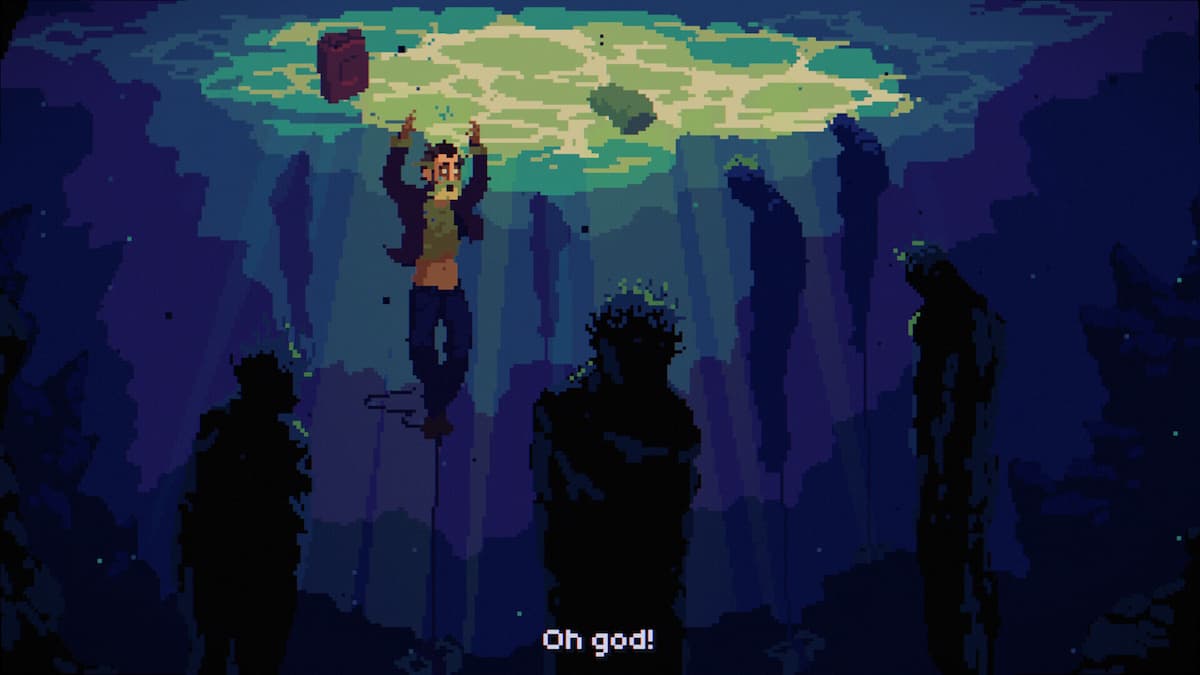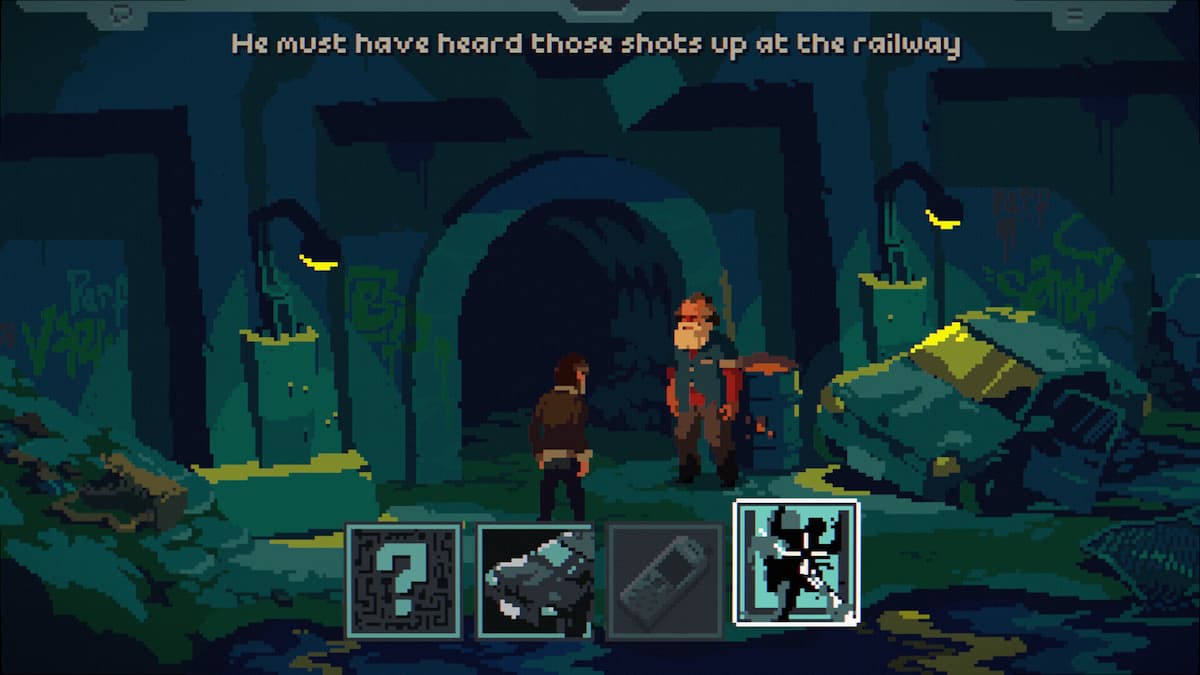Point-and-click adventure games have historically been a mixed bag for me. Some are great at keeping things moving (see: Disco Elysium), while others will leave you lost and confused for hours on end (see: Broken Age). Developed by Powerhoof, The Drifter makes a lofty promise. This game wants to be a fresh take on the point-and-click adventure genre that will never frustrate you, and will always keep the plot moving.
Big promises, Powerhoof. But can you deliver? The answer is yes, but there are some caveats, which I will get into shortly.

First, as always, we must start with the preamble. The Drifter follows the story of protagonist Mick Carter, whom I can only describe as a bum. He calls himself the Drifter, which is really just a fancy way of saying the man lives on the streets and probably hasn’t taken a shower in a month. The game opens with him waking up on a cargo train he snuck on to go back to his hometown for a funeral, and all of a sudden, strange men attack the train.
These men also happen to be dressed in Splinter Cell-style high-tech suits with green lights and are armed with scary guns. The men kill another bum guy who was on the train with Mick, but Mick himself was lucky enough to escape with his life. That’s just the start of the story. Once Mick gets his bearings, he finds that his phone is dead, his charger is busted, and as luck would have it, he doesn’t have his sister’s address saved or written down anywhere so he’s just straight up lost. Your task is to help Mick find his family, while also navigating a strange conspiracy with the Splinter Cell guys.
Right off the bat, I expect most players will be impressed by the voice acting and the striking 2D pixel art. The Drifter has been described as a pulp adventure thriller, and everything about its presentation supports that. Mick’s voice is gruff and tough, but it’s injected with a shot of panic and emotion at just the right time to clue you in to his state of mind. The pixel environments are dull and grim, but shone upon with just enough light to create a truly creepy atmosphere that never fails to unsettle you.
It certainly helps that most of the NPCs you meet on your journey are strangely chipper as well, which only adds to the creepy, uncanny valley nature of the game. A journalist that you meet near the start of the game is a prime example of this, with her prim and proper clothing juxtaposed with the homeless community just dressed in rags and tags. She is, of course, inappropriately upbeat too, which just makes The Drifter feel all the more imposing.
It’s not long before you’re introduced to the game’s first twist and major conceit. I won’t consider this a spoiler as you learn about it less than an hour in, and it’s been alluded to in the Steam description, but here’s your fair warning.
When Mick encounters the Splinter Cell dudes for a second time, he’s immediately tied up and thrown into the water, left to drawn. Except, he can’t really die. This segment of the game serves to teach you how to think quickly on your feet, as you need to get Mick free before he drowns. There’s a time limit here, as indicated by Mick’s gradual descent to the bottom, so you’ll need to act fast or die and repeat the whole segment.

To that end, I guess The Drifter‘s held up its promise. Everything feels fast-paced because the game has a fair few puzzles that are on a time limit. At the same time, is it really fast-paced if you can just redo the segment immediately anyway if you fail? At times, this can feel frustrating because I’d get so close to doing everything in the right sequence, only to fall just short because I didn’t do them quite fast enough, and I’d have to repeat the whole thing again.
The puzzles don’t always make sense either, though this is a universal problem in the genre, I think. More than once, I’d run into the age-old problem of selecting an item and interacting with a particular object because it makes sense to me, but the game would shut me down because it had an entirely different solution in mind. The controls are not especially intuitive either, as the game opts to have separate options for all the tools at your disposal, and I think The Drifter might have benefited from a cleaner interface.
The good news, then, is that The Drifter tries to make up for its shortcomings with a compelling story. I wouldn’t necessarily call this a must-play, as the story doesn’t really break new ground or do anything particularly innovative, but it is at the very least interesting, bolstered by generally strong voice performances.
The Drifter is brimming with potential. It’s clear that a lot of love and care went into making this game. It’s especially evident in the voice performances and beautiful 2D environments, but it’s ultimately held back by weird design decisions and some unintuitive puzzles.
A review code for the game was provided by the publisher. You can check out our review policy here. Reviewed on PC.


